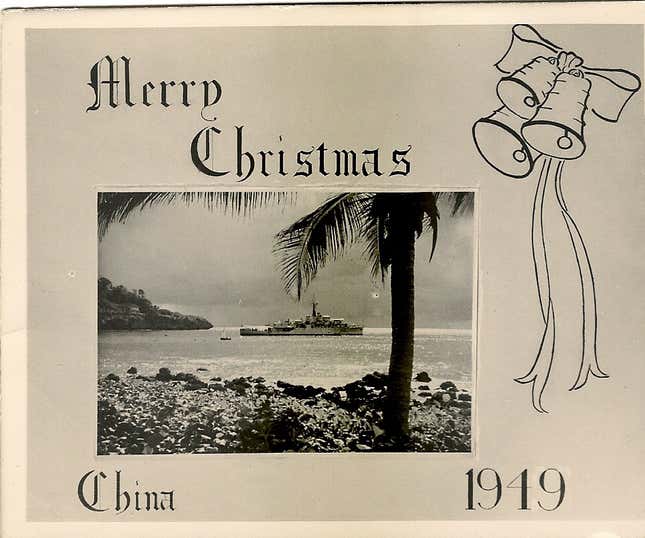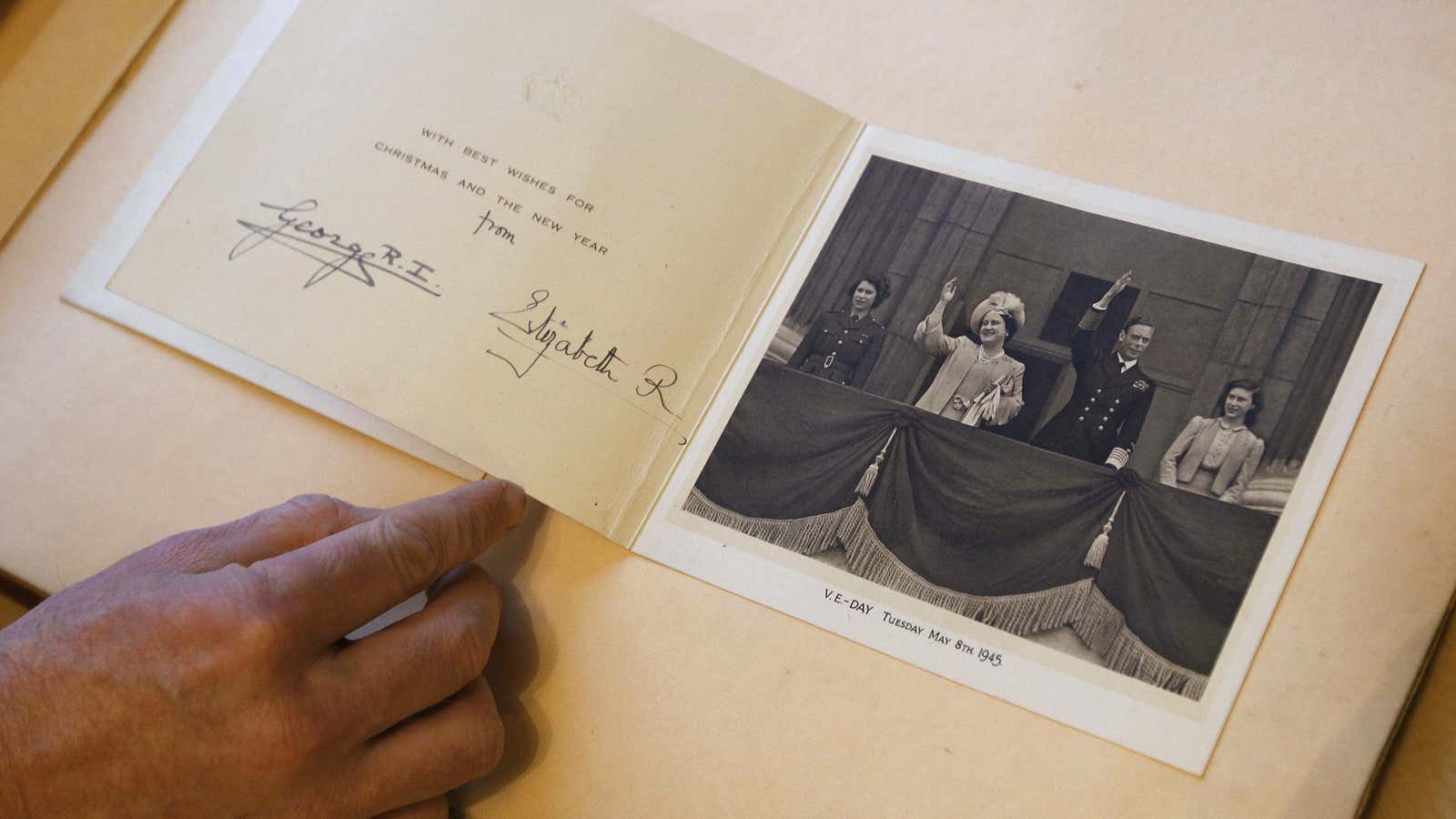Greeting cards have strange powers. Many get thrown away within weeks of opening, but the ones that remain can end up being treasured for years, stowed away in shoeboxes and drawers as part of the family archive. This year, web-based genealogy service MyHeritage asked subscribers to send in their oldest Christmas cards, and the creative ingenuity and personalization that made those cards keepers is evident. Teeming with graphic design motifs of a bygone era, here are some of the best:
A 118-year-old pop-up greeting card
As a 3-D surprise concealed in a flat envelope, pop-up greeting cards emerged alongside the development of more sophisticated printing presses in the late 1800s. The UK Greeting Card Association explains that German illustrator and paper-engineer Lothar Meggendor who made delightful movable picture books (video) with intricate pop-ups in the 1860’s influenced today’s commercial pop-up cards.
This was given to my grandmother, Cornelia Johanna Elizabeth Smuts, in 1897, when she was 22 years old. It is quite large, measuring 268mm in width and 258mm in height when folded flat. By pulling on its ends, it opens up into a 3D structure which can stand upright.—Gawie van Dyk
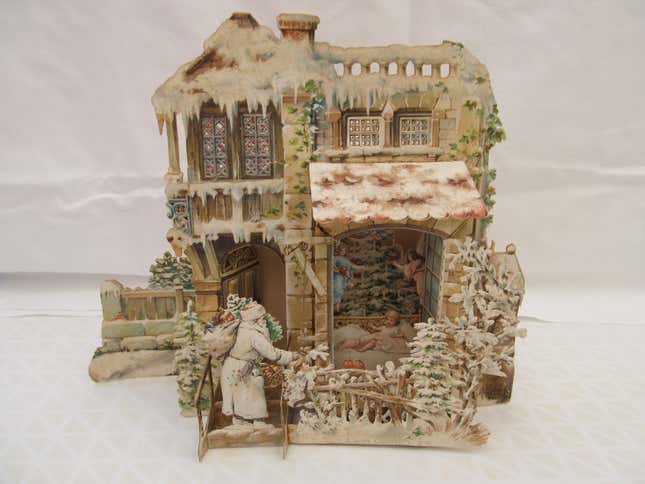
The rage for Christmas roses
The poinsettia didn’t always reign as the official flower of Christmas. Roses, daisies, gardenias, geraniums, and apple blossoms all appeared on the first mass-produced US greeting cards created by Louis Prang in the 1870s. The white Christmas rose, in particular bears special meaning in Christian iconography as a symbol for Mary.
My oldest Christmas card is actually a postcard from a collection of my paternal grandmother. It is beautiful card with rich colors and deep embossing from around 1909.—Dale Dailey
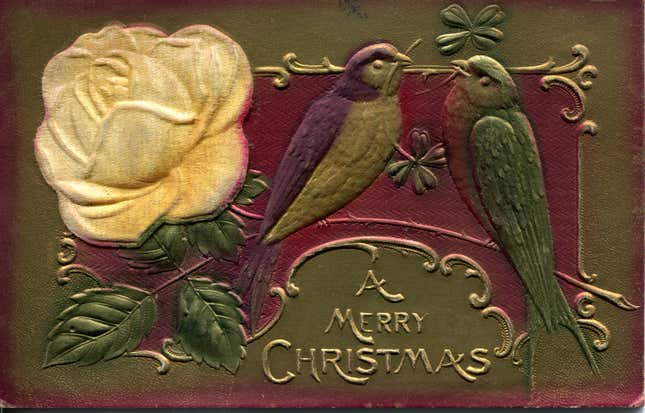
My grandma treasured all of the cards that she received in 1930. This one was from her aunt and uncle.—Angella Rodgers
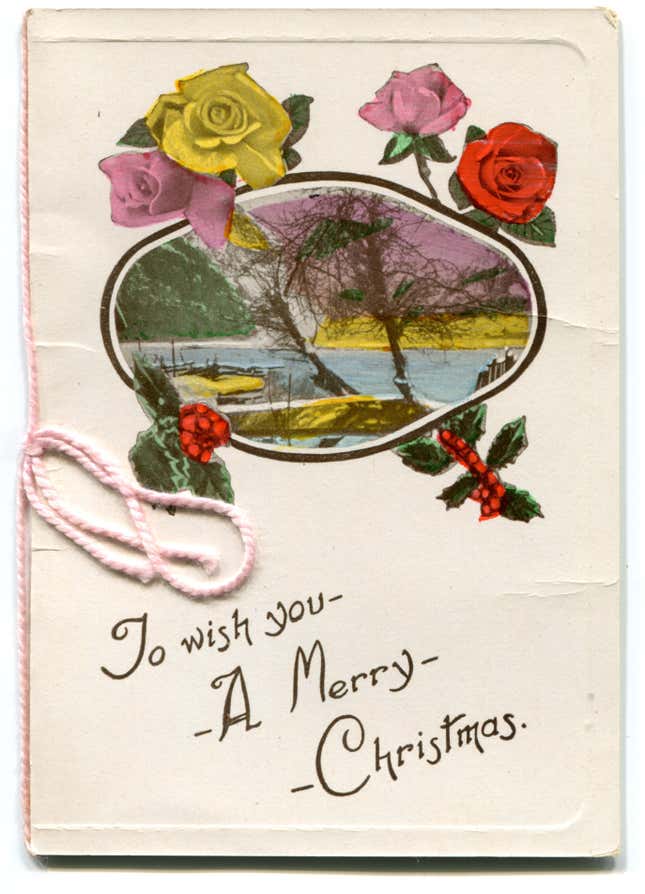
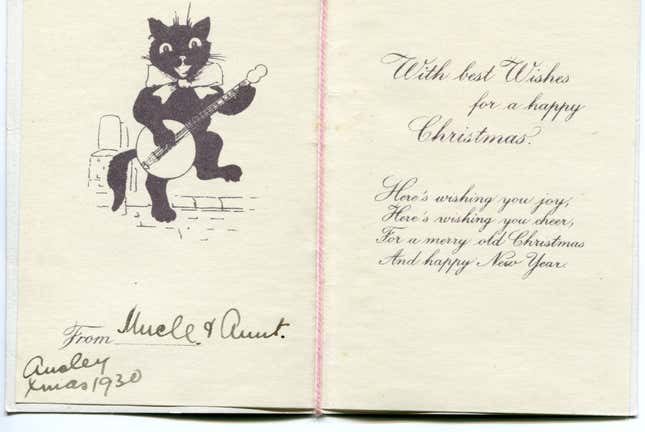
Wartime greetings
Sending Christmas cards to troops in some Muslim countries that ban the display of Christian symbols has caused controversy lately, but exchanging Christmas notes with military troops stationed abroad is longstanding tradition since the first World War.
This card was sent by David W. Canady to Lizzie Mae Reynolds about a year before they married. David was in the Army, stationed at Ft. William F. Seward Supply Depot. Card is post marked December 17, 1915, Haines Alaska. Note how brief the address is, yet it arrived at intended destination.—Garry McWells
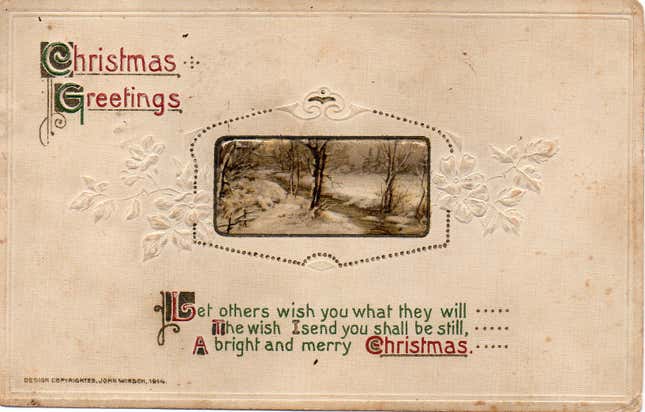
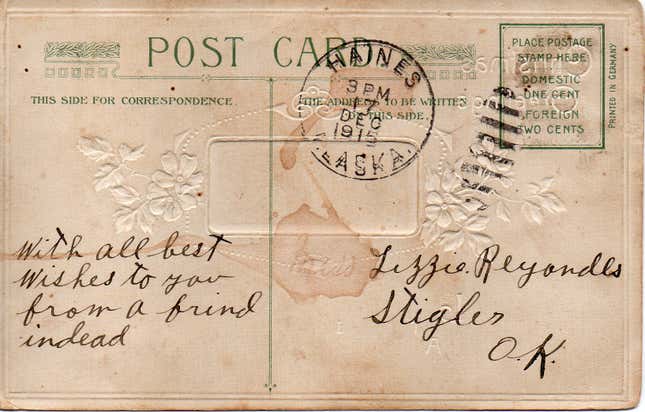
My brother’s Christmas card sent home from the Korean War.—June Beven
